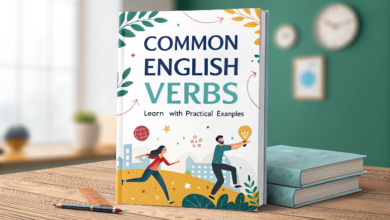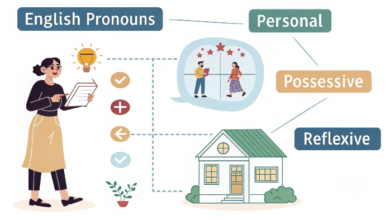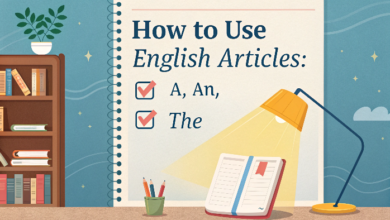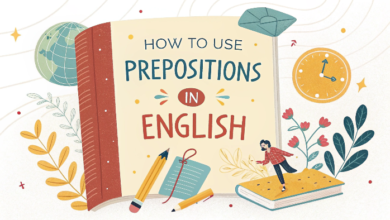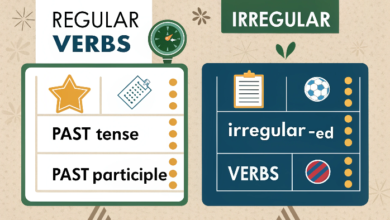Using Phrasal Verbs in English: How and Why
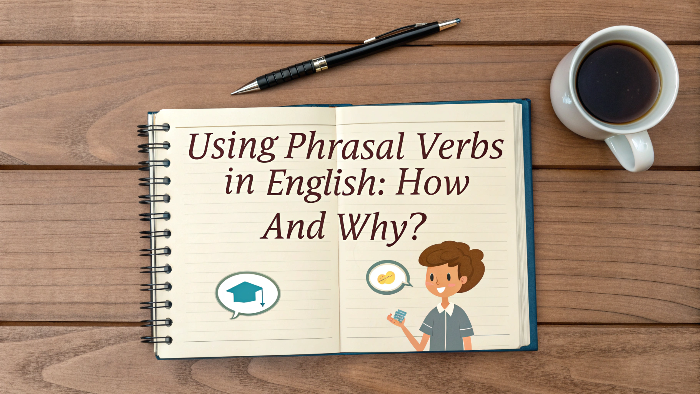
Using Phrasal Verbs in English: How and Why
In English, phrasal verbs are one of the most important and commonly used aspects of the language. They consist of a verb combined with one or more particles (prepositions or adverbs)
that change the meaning of the original verb. While they may seem confusing at first, phrasal verbs are essential for sounding natural and fluent in English.
In this article, we will explore what phrasal verbs are, why they are important, and how to use them effectively in everyday conversations and writing.
What Are Phrasal Verbs
A phrasal verb is a combination of a verb and one or more particles, such as prepositions or adverbs, that together form a new meaning. For example, the verb look can be combined with the particle up to form the phrasal verb look up, which has a completely different meaning from just look.
Examples of Phrasal Verbs:
Look up (to search for information)
I need to look up the word in the dictionary.
Give up (to stop doing something)
She gave up smoking last year.
Run out (to have no more of something)
We ran out of milk this morning.
Turn off (to switch off a device)
Please turn off the lights when you leave.
Pick up (to collect or gather)
I need to pick up my clothes from the dry cleaner.
As you can see, the meaning of these phrasal verbs is often not directly related to the meanings of the individual words. This is what makes phrasal verbs a bit tricky for learners but also very important for mastering English.
Why Are Phrasal Verbs Important
Phrasal verbs are widely used in everyday English, especially in casual conversations, making them a key part of fluency. Understanding and using them correctly will make your English sound more natural and authentic.
Here’s why phrasal verbs are important:
Common in Spoken English: Phrasal verbs are frequently used in informal conversations. For example, people often say pick up instead of collect, or turn off instead of switch off.
Flexibility in Meaning: Phrasal verbs often allow for more specific or nuanced expressions. For instance, give up means to stop trying, but give in means to yield or surrender.
Widely Used in Idiomatic Expressions: Many idiomatic expressions in English rely on phrasal verbs, so learning them is essential for understanding native speakers. For example, come across (to find by chance) or bring up (to mention or introduce a topic).
How to Use Phrasal Verbs in Sentences
To use phrasal verbs effectively, it’s important to understand how they fit into different sentence structures. Here are some tips and examples:
1. Phrasal Verbs with Direct Objects:
Some phrasal verbs are transitive, meaning they require a direct object. For example:
Pick up (transitive):
I picked up the phone.
She picked up the kids from school.
2. Phrasal Verbs without Direct Objects:
Other phrasal verbs are intransitive, meaning they don’t take a direct object. For example:
Wake up (intransitive):
I wake up early every morning.
She wakes up at 7 AM.
3. Phrasal Verbs with Separable Objects:
Some phrasal verbs can be separated by their object, especially when the object is a noun (not a pronoun). For example:
Turn off (separable):
I turned off the TV.
Turn the lights off before leaving.
4. Phrasal Verbs with Pronouns:
When the object of a phrasal verb is a pronoun (e.g., it, him, her), you must place the pronoun between the verb and the particle.
Pick up (separable with pronouns):
She picked it up.
I can’t pick him up right now.
For more, go to the next page

